What is your opinion about fossil Australopithecus which may have evolved into human?
2 Answers
How Australopithecus became human is a mystery. The lineage of the Australopithecus is disputed by scientists. In my opinion the evolution is of modern humans from Australopithecus is not real.
Explanation:
Since 1986 the lineage goes from Australopithecus afarensis (see Lucy) to Australopithecus africanus (see Taung) then to Homo habillis to homo erectus to homo sapiens (archaic) which split into Neandertals and Modern Humans. Modern Humans are thought to have substantial amounts of Neandertal DNA.
Australopithecus aethiopicus (see WT 17000) is not considered to be part of the human lineage which gave rise to Australophithecus robustus (see Boisei) All of these side lineages are considered to have become extinct.
Lucy, Australopithecus afarensis, is thought to be about 3 million years old. It would require about 5 million mutational events to have occurred in our genes in that three million period to account for the differences between Lucy's genes and modern humans.
Through mutations Lucy is thought to have given rise to Australopithecus africanus (Taung). Since Taung had an adaptive advantage over Lucy, Lucy is thought to have lost the survival of the fittest and became extinct.
Australophithecus africanus is thought to be about 2 million years old. However in 1973 Geologist T.C. Partridge determined that the cave where the Taung fossil was found could not older than 0.87 million years old (Nature 246 9 nov. 1973 p 75-79) This would make a direct descent from Lucy unlikely . Also Taung would be younger than the next fossils in the human lineage. destroying the timeline.
Austrolophithecus africanus is thought to have given rise to the first proto humans Homo habillis or handy man. Louis Leaky discovered small fossils "humanoids" associated with tools like hand axes. These fossils had a a thin high domed and gracile cranium, much like modern humans. Louis Leaky believed these fossils were the direct ancestors of modern humans, homo sapiens. A fossil was found under a volcanic strata dated at about 2.6 million years old.
Homo hablillis is thought to have given rise to Homo erectus. Homo erectus is thought to be about 1 million years old. Homo erectus fossils give evidence of bipedal motion. However had a thick low domed and robust skull. This is going backwards from Homo habillis. This doesn't make sense.
So my opinion is that evolution from the many forms of Austrolophithecus to modern humans did not happen. The fossils do not show a gradual or smooth transition from ape like organism to human like organism.
Only experts on human evolution(http://network.expertisefinder.com/searchexperts?query=Human%20evolution) can provide opinion. Here some available informations can only be listed. The answer is based on neo-darwinian idea of evolution.
Explanation:
Australopithecus is a genus that includes fossil bipedal apes from Africa, the name describes them as 'southern apes'! The first such discovery came to light in 1920s ( A.africanus /Taung baby) but over the years a number of Australopithecine species were identified and described.
Australopithecines were the first group of apes who started walking upright: at a time when African grassland was spreading. (Kenyapithecus and Paranthropus are also considered as Australopithecines. )
First Australopithicines were probably here on earth about 6 million years ago, and they definitely shared their habitat later with more advanced genus Homo before becoming extinct about 1.5 million years ago.
To know more about some of the species included under the genus, please click on this Columbia University link.

(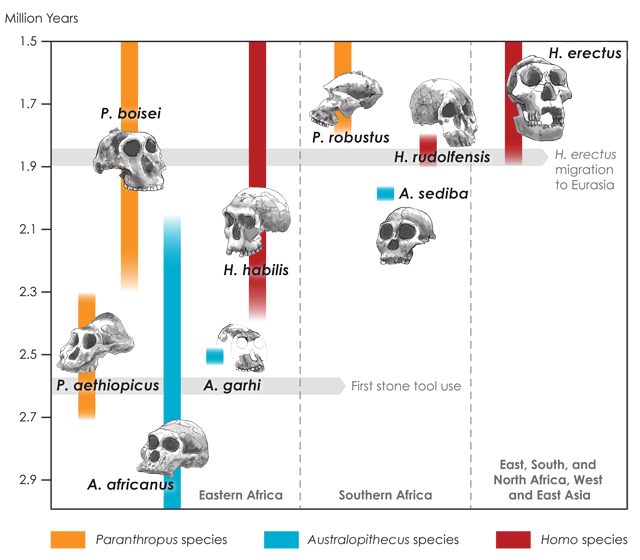 )
)
One of the described Australopithecus species could be our direct ancestor (there are many contenders actually) or that may not be the case. New Australopithecine fossils could be unearthed any day and the story of human evolution may take another turn but genus Australopithecus occupies an important link in the human family tree. This is because of :
-
Accumulation of few important human like characteristics in them related mainly to their bipedal habit. Interestingly, their brain was still in the size of an ape.
-
Genetic diversity seen in their fossils, abundance in Africa and most of these predating genus Homo

(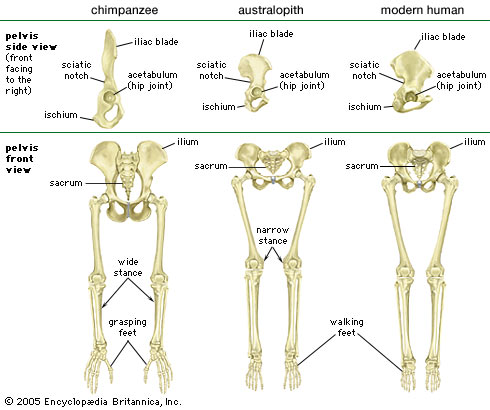 )
)
Based on the fossil findings till now, anthropologists believe that genus Australopithecus is ancestor of genus Homo. Bipedalism allowed the apes to explore their world with hands, which were no longer used in locomotion. Genus Homo left behind the arboreal habit of Australopithecines and the brain showed a significant improvement in size. First such fossils of Homo habilis, appear in strata which are almost 2.5 million years old. They were gathering and using stones to scare away wild animals, later also started making tools.
Brain capacity increased further in African Homo ergaster, and contemporary Asian Homo erectus. Brow and jaw receded significantly in them. Palaeontologists are divided in their opinion about the place (whether in Africa or in Mediterranean region) of origin of Homo sapiens from H.ergaster though most of them are of opinion that modern human evolved some 200,000 years ago (estimated age of mitochondrial eve is about 180,000 years).
Fossils of H.s. are reported from different parts of Europe: Rhodesian, Cromagnon, etc are names of different groups of modern men who lived in certain locations between 100,000 to 30,000 years. Few of these groups also interbred with neanderthals, considered to ba a close cousin of modern human.

(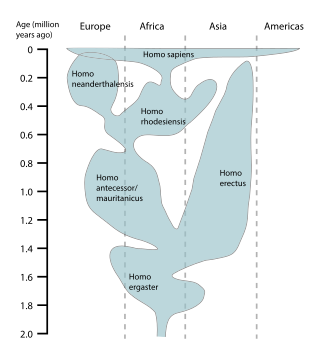 )
)
As the line of evolution of genus Homo advances, more complex picture emerges from recent research works. Below is an illustration that summarises gene flow between different geographically isolated subpopulations of different species of Homo.
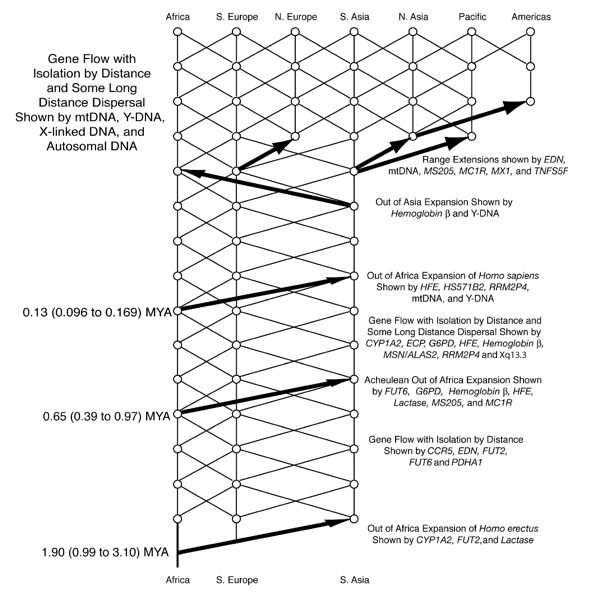
(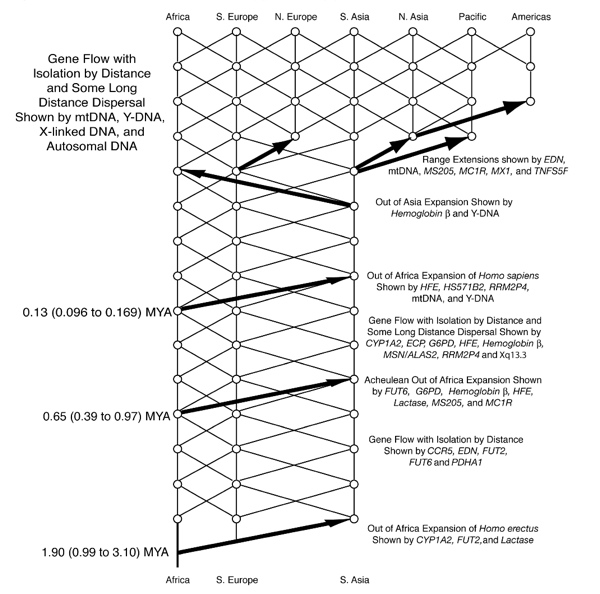 )
)

